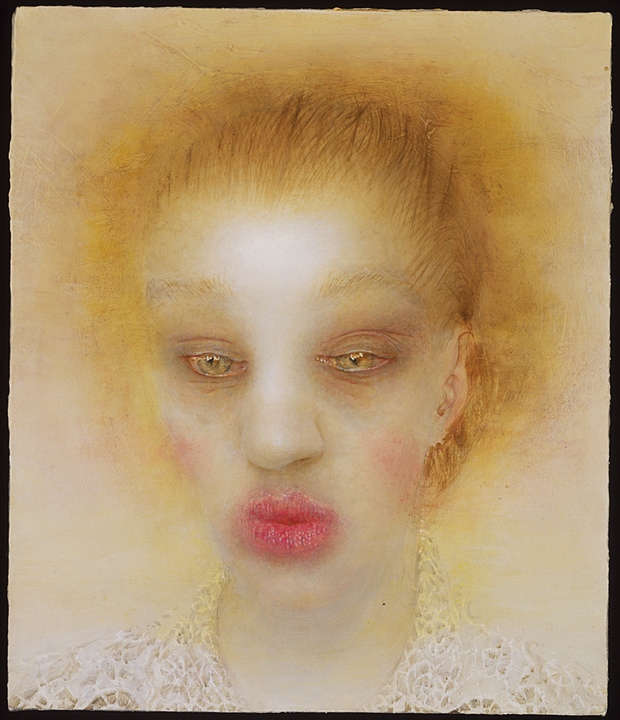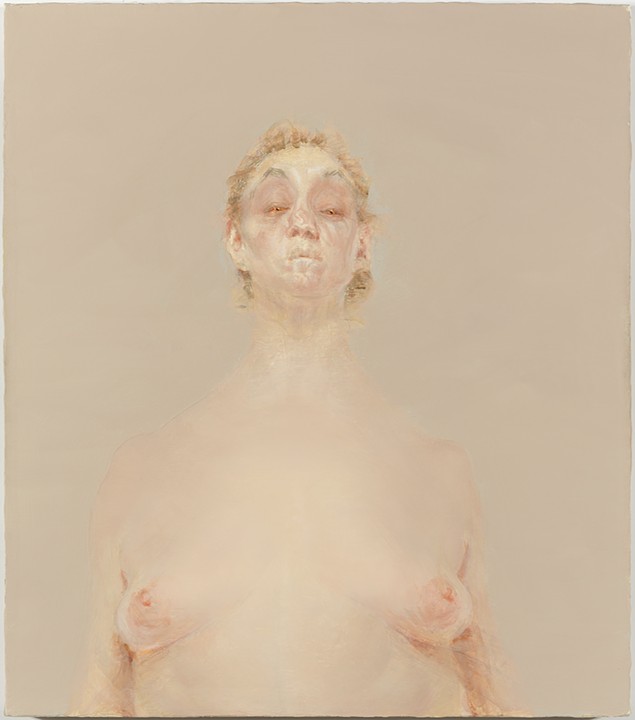Anne Harris was interviewed by Mira Gerard for Figure Ground Communication. In a review in Art in America Jonathan Goodman said about her work Accomplished technique supports the often brutal frankness of her self-portraits, which have the gravitas that results when truth is favored over any easy kind of beauty.
During the interview Gerard asked Harris how the figures come in to being, essentially how she develops a painting..
I’m really interested in the sense that substances can shift their weight–that flesh can be air, that air can be liquid, that density shifts. I love it that you say you can see this, as it isn’t often discussed in relationship to my work. There’s an assumption that I must intend to paint a conventional description of 3-D form and weight, but really I’m trying to do something that can’t be nailed down.
I tend to think metaphorically when I paint–I’m at my best when I do. So, I might imagine that the figure is being poured into her container, that the ground surrounding her is some denser stuff, holding her in place (like a mold), or that the painting itself is a slice of air and everything in it is just slightly shifting, like condensation, or everything is skin, pushing against the membrane of the picture plane.
As to your second question: I usually have a starting point, at least a simple compositional idea (some would say I really only have one idea!), but the painting changes a lot over the course of things. I might use a drawing as a starting point for a painting. In that case I might trace the drawing and transfer a simple outline to set up placement and proportion. more
 |
| Anne Harris |

